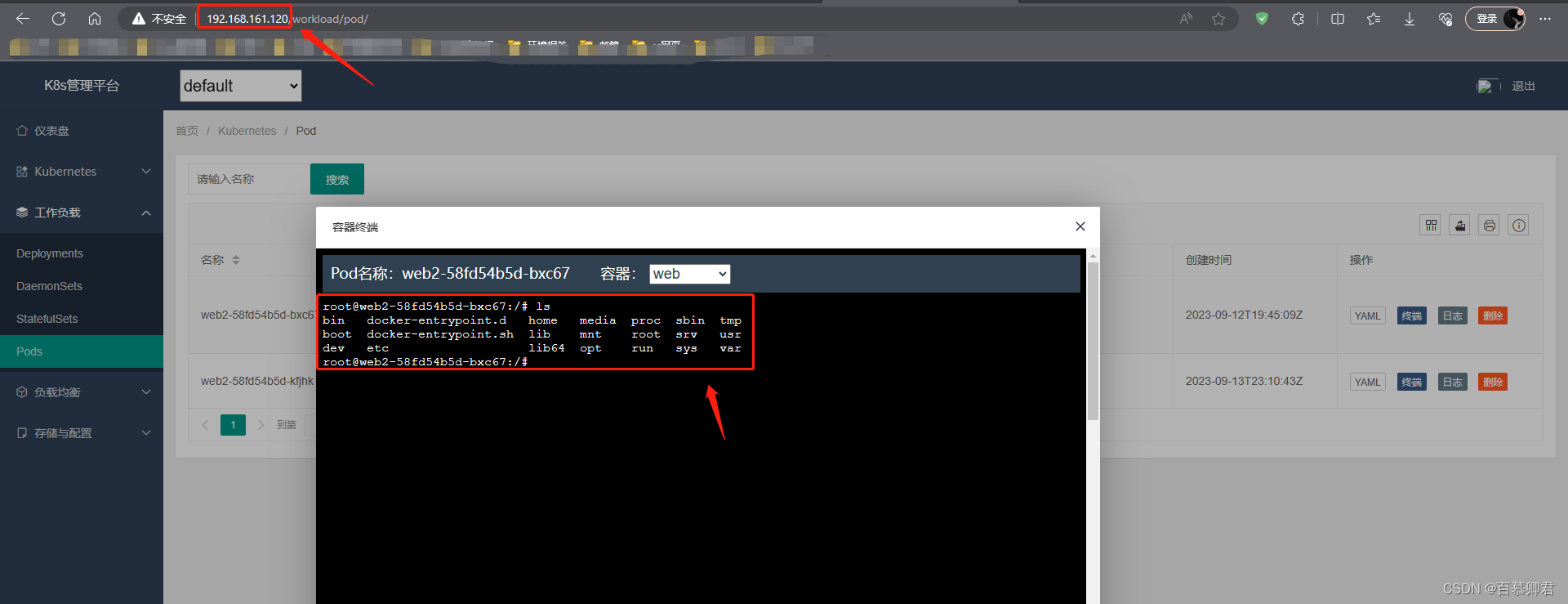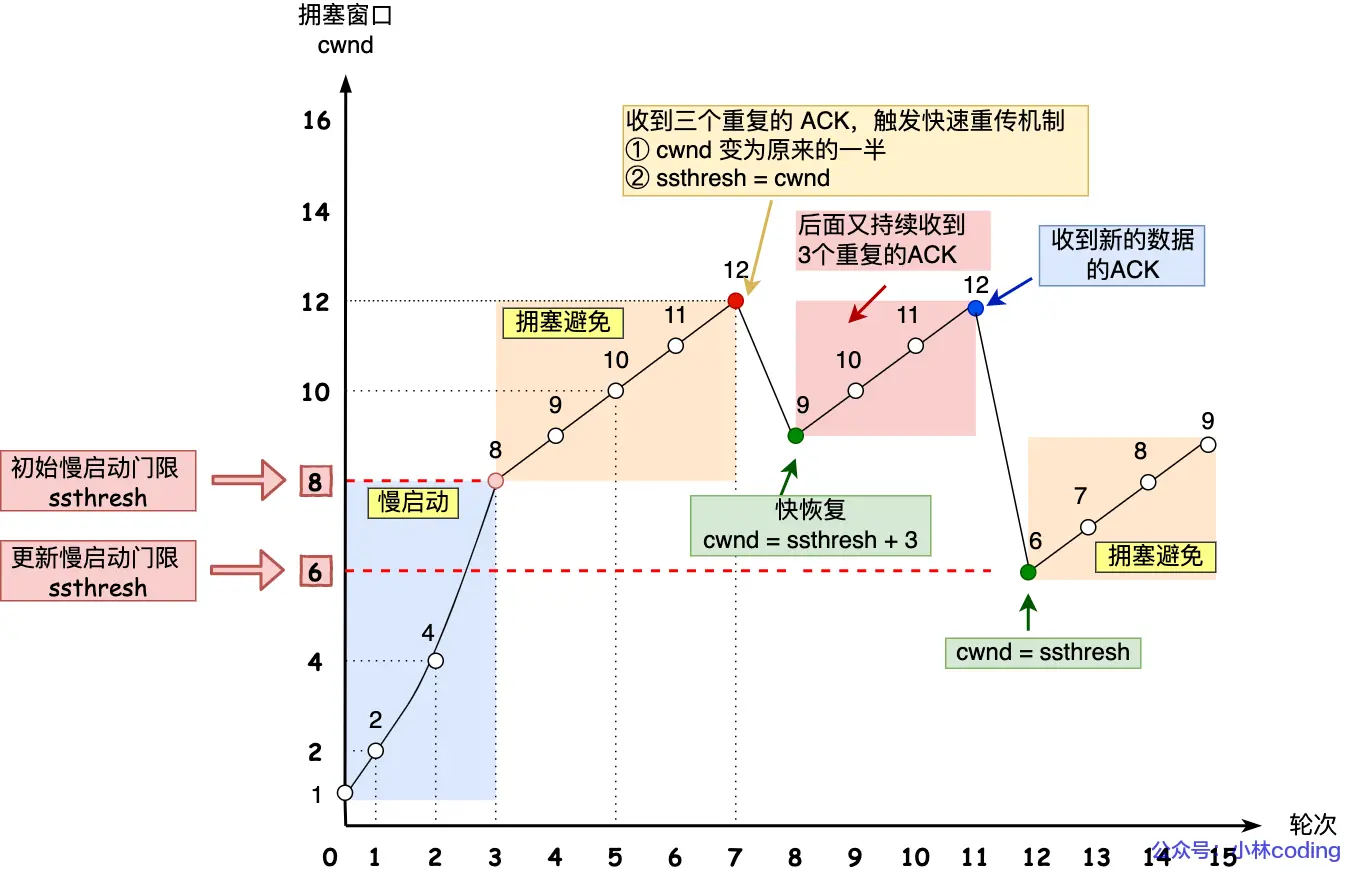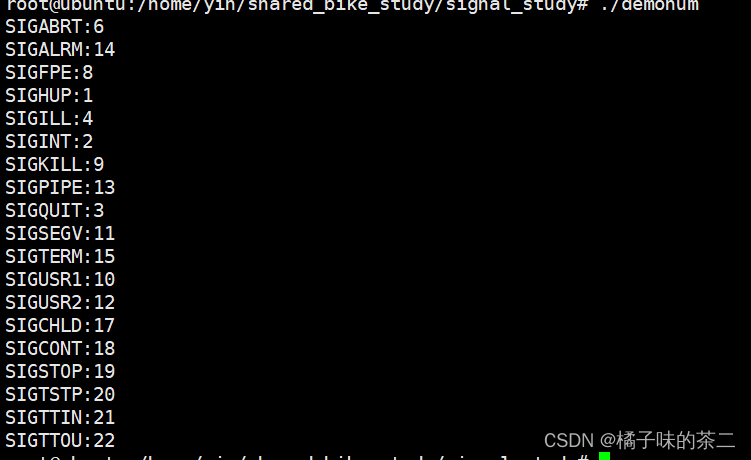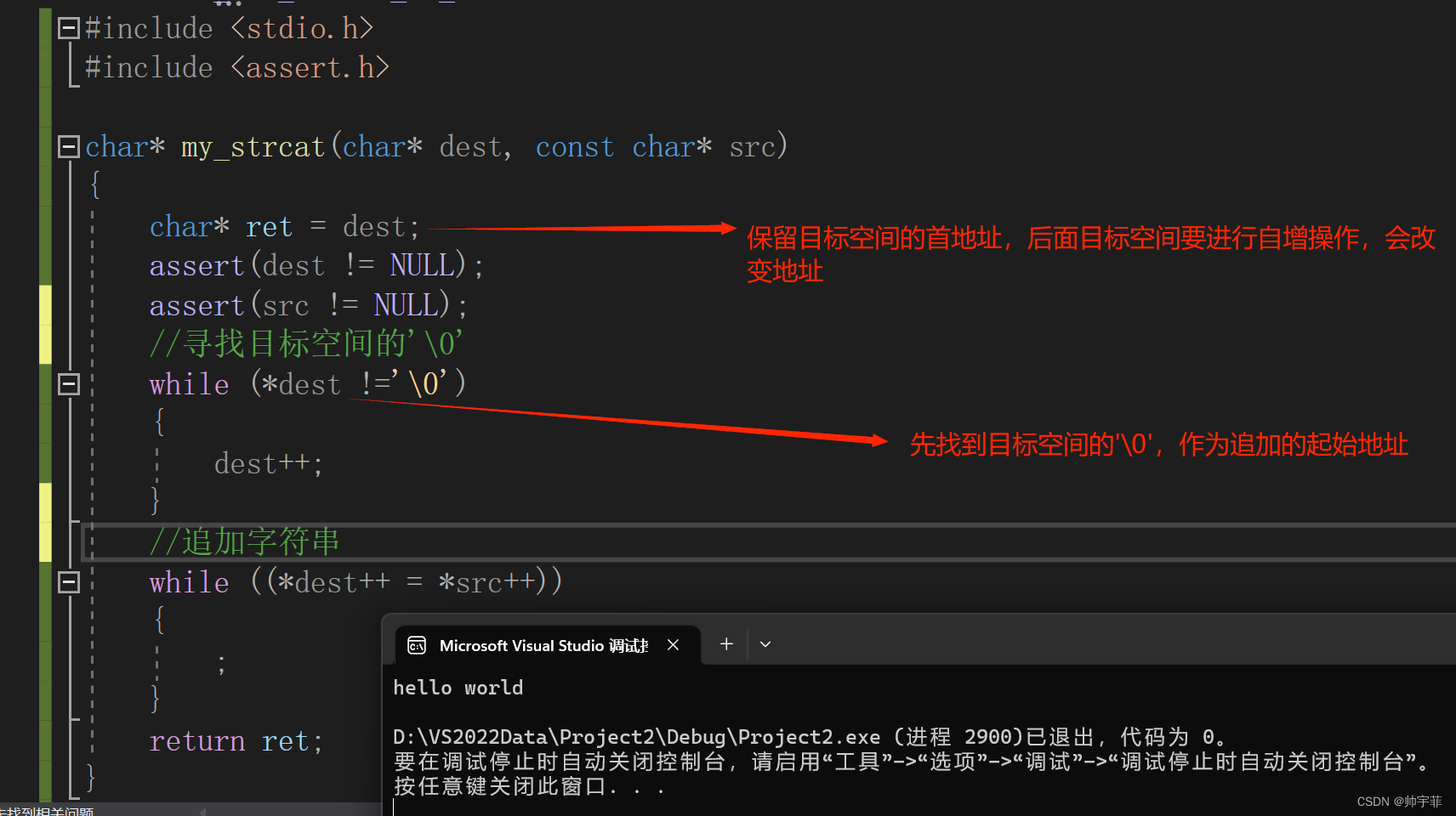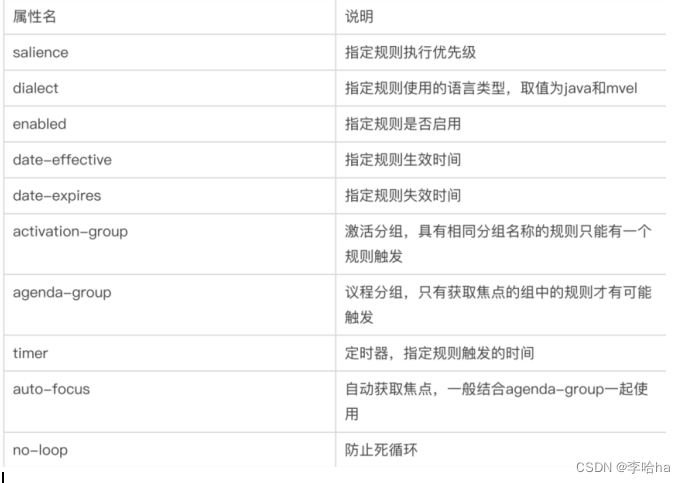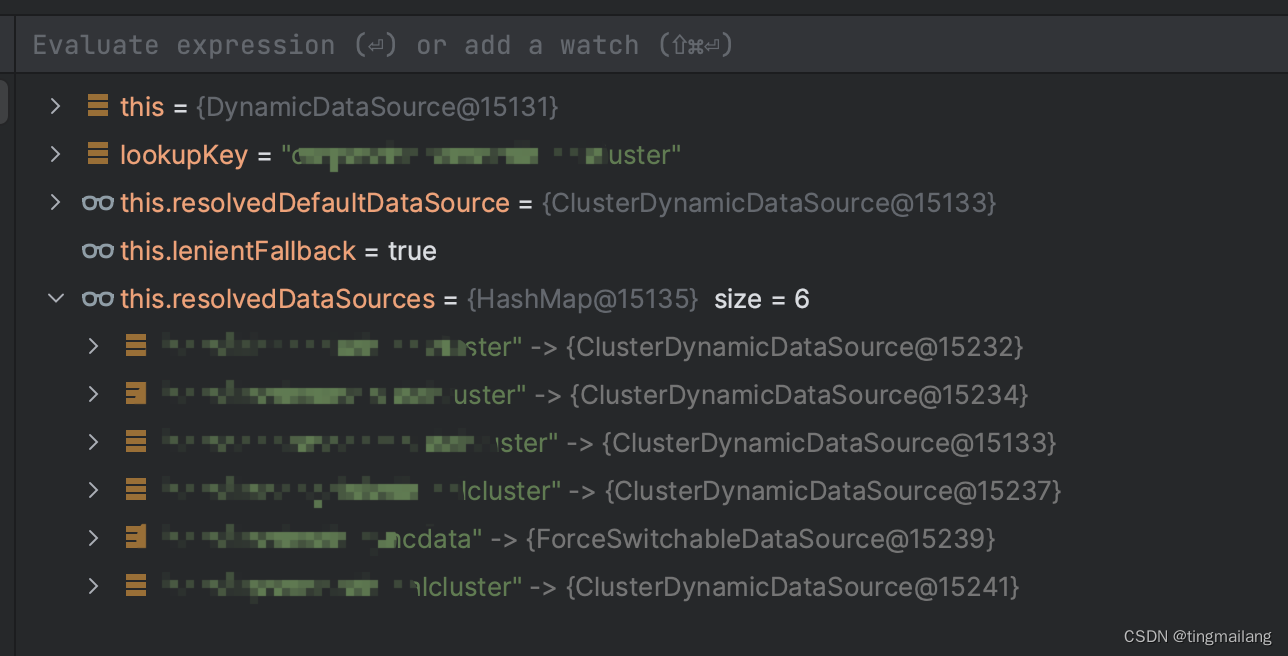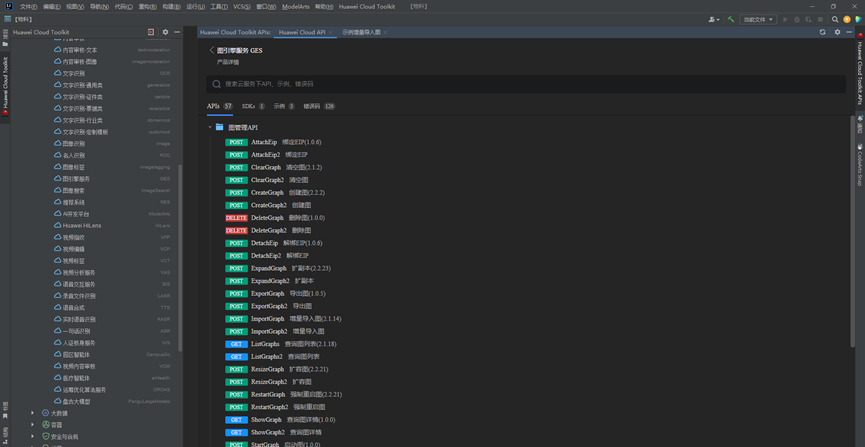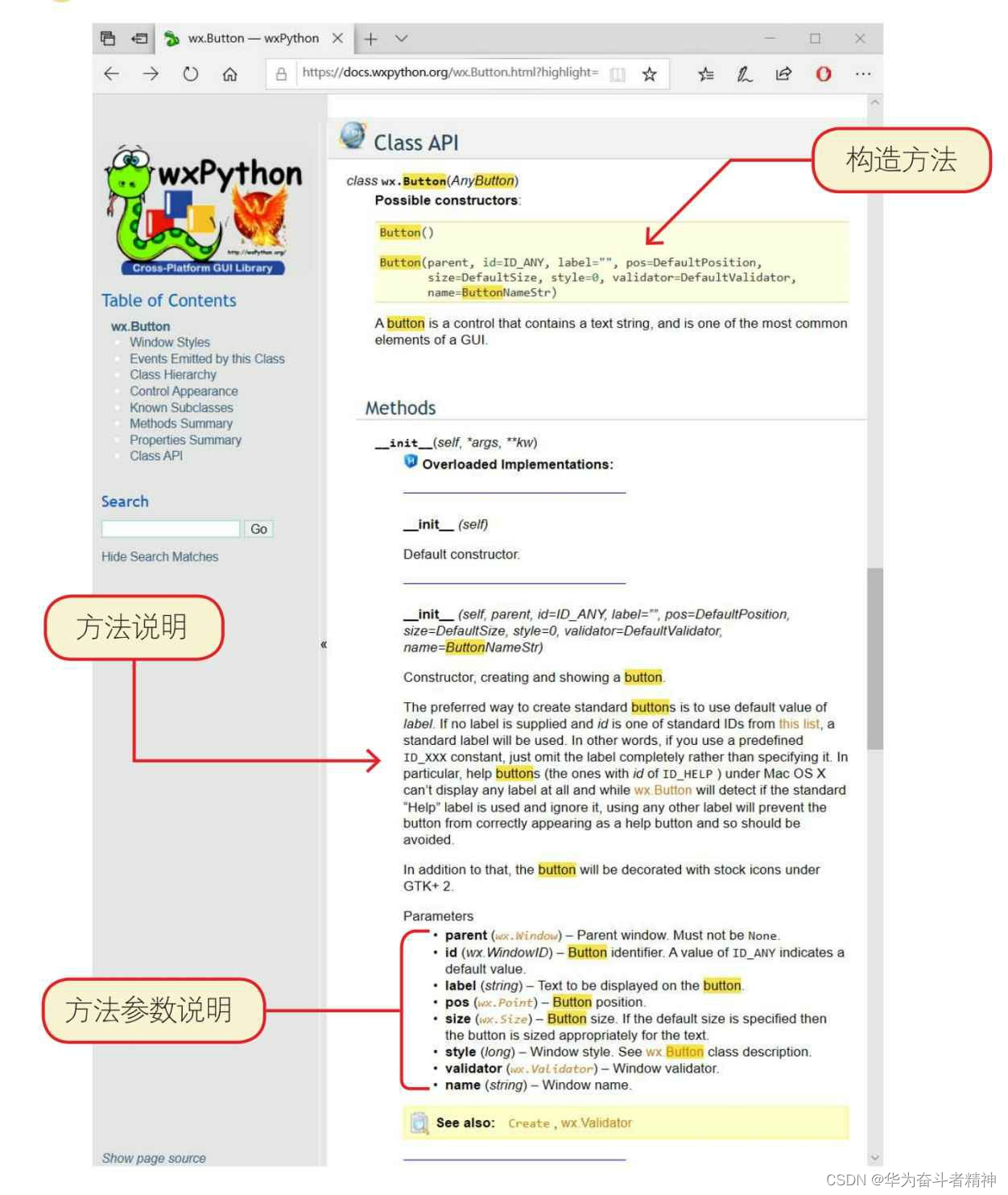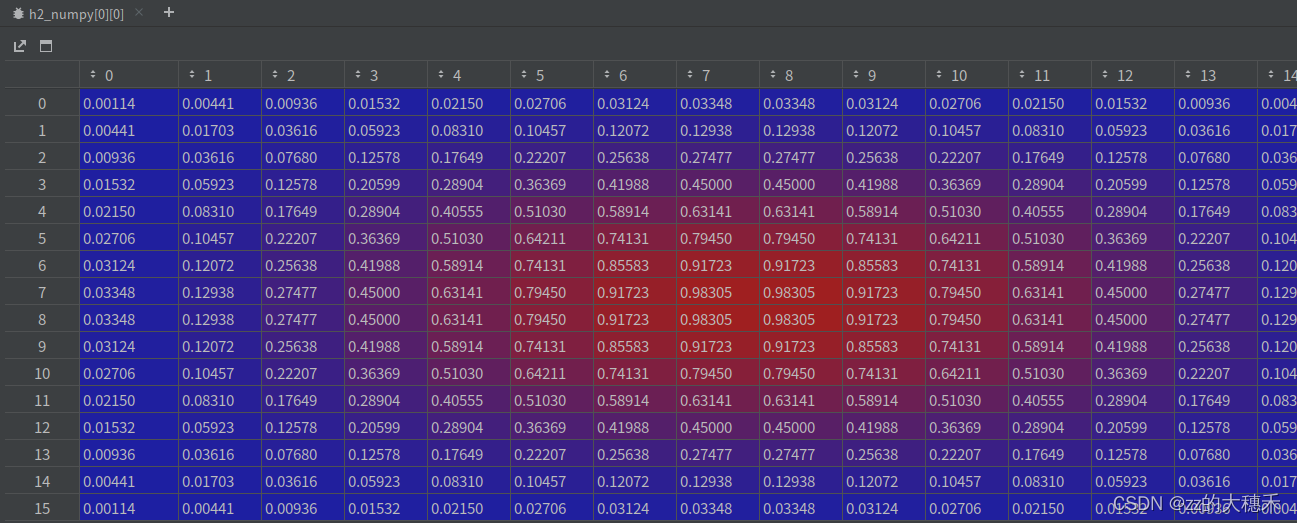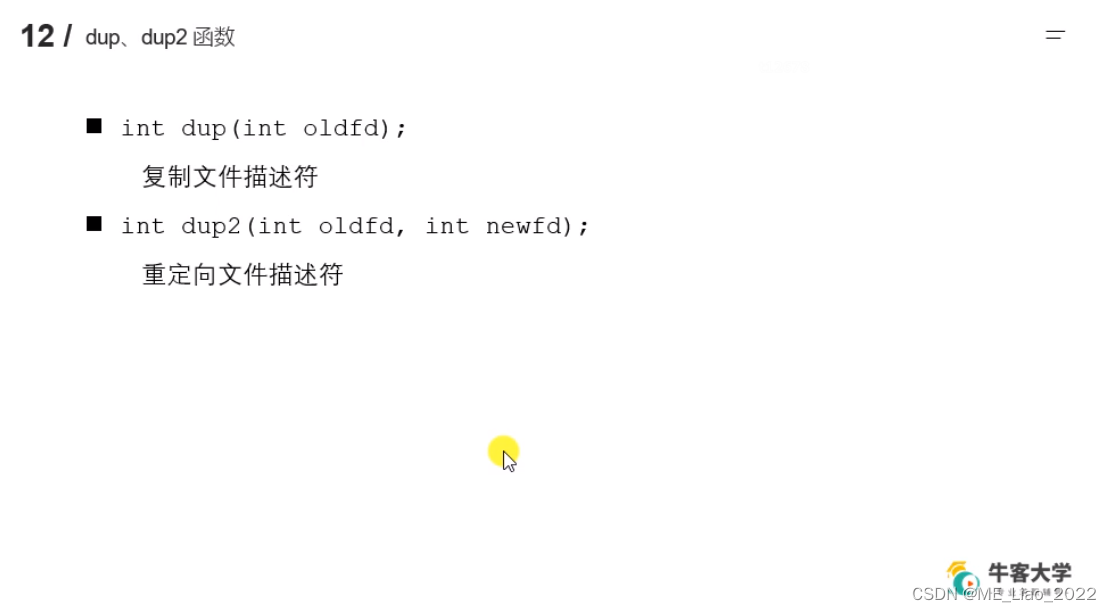
1.dup1
#include <unistd.h>
int dup(int oldfd);
作用:复制一个新的文件描述符
从空闲的文件描述符表中,找一个最小的,作为新的拷贝的文件描述符
指向的文件和旧的文件描述符是一样的
int dup2(int oldfd, int newfd);
#include <unistd.h>
#include<stdio.h>
#include<fcntl.h>
#include<sys/stat.h>
#include<sys/types.h>
#include<string.h>
int main() {
int fd = open("a.txt", O_RDWR | O_CREAT, 0664);
int fd1 = dup(fd);
if(fd1 == -1) {
perror("dup");
return -1;
}
printf("fd: %d, fd : %d\n", fd, fd1);
close(fd);
char* str = "Hello world";
int ret = write(fd1, str, strlen(str));
if(ret == -1) {
perror("write");
return -1;
}
close(fd1);
return 0;
}2.dup2
#include <unistd.h>
int dup2(int oldfd, int newfd);
作用:重定向文件描述符
oldfd必须是一个有效的文件描述符
oldfd和newfd值相同,相当于什么都没有做
#include <unistd.h>
#include<stdio.h>
#include<string.h>
#include<sys/types.h>
#include<sys/stat.h>
#include<fcntl.h>
int main() {
int fd = open("1.txt", O_RDWR | O_CREAT, 0664);
if(fd == -1) {
perror("open");
return -1;
}
int fd1 = open("2.txt", O_RDWR | O_CREAT, 0664);
if(fd1 == -1) {
perror("open");
return -1;
}
printf("fd: %d, fd1: %d\n", fd, fd1);
int fd2 = dup2(fd, fd1);
if(fd2 == -1) {
perror("dup2");
return -1;
}
//通过fd1去写数据,实际操作的是1.txt,而不是2.txt
char* str = "hello dup2";
int len = write(fd1, str, strlen(str));
if(len == -1) {
perror("write");
return -1;
}
printf("fd: %d, fd1: %d, fd2: %d\n", fd, fd1, fd2);
close(fd);
close(fd1);
return 0;
}
